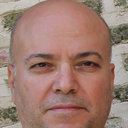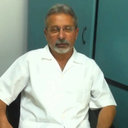[A rarely seen cause of brain abscess: neurotoxocariasis].
الكلمات الدالة
نبذة مختصرة
Toxocariasis in man is associated with three syndromes which are visceral larva migrans, ocular larva migrans and covert toxocariasis. Although neurotoxocariasis is defined as the fourth syndrome of toxocariasis, it is usually considered as a neurological disease which is usually concomitant with visceral larva migrans. In this report, a case of brain abscess caused by toxocariasis was presented. A 56 years-old female patient was admitted to our hospital with headache, pain referring to right side of her face and teeth, numbness of forth and fifth finger of her right hand. Cranial diffusion weighted, dynamic magnetic resonance imaging (MRI) revealed a few non-specific intensities at supratentorial white matter, an approximately 13 x 12 mm lesion without contrast enhancement and a significant edema around the white matter in the left frontal cortex. Histologic examination after stereotactic biopsy of the lesion revealed diffuse histiocyte infiltration. A specific agent could not be detected in the histochemical examination. Western-blot test for toxocariasis in serum and cerebrospinal fluid samples were found positive. She was transferred to the infectious diseases clinic, and albendazole therapy (400 mg, q12h) was started. Albendazole treatment was completed for a total of one month following the regression of the cranial MRI findings on the 14th day of therapy. The patient is recalled for cranial MRI control three months later. However, it was noted that she continued albendazole for three months. Compared to the previous MRI, there were two stabilized T2A hyperintense lesions in left cranial hemisphere and minimally regressed lesions at the level of left frontal centrum semiovale. The patient was successfully treated with albendazole. There was no relapse after six month follow-up. This case was presented to withdraw attention to neurotoxocariasis which may be encountered although rarely in the etiology of encephalitis/ brain abscess.



